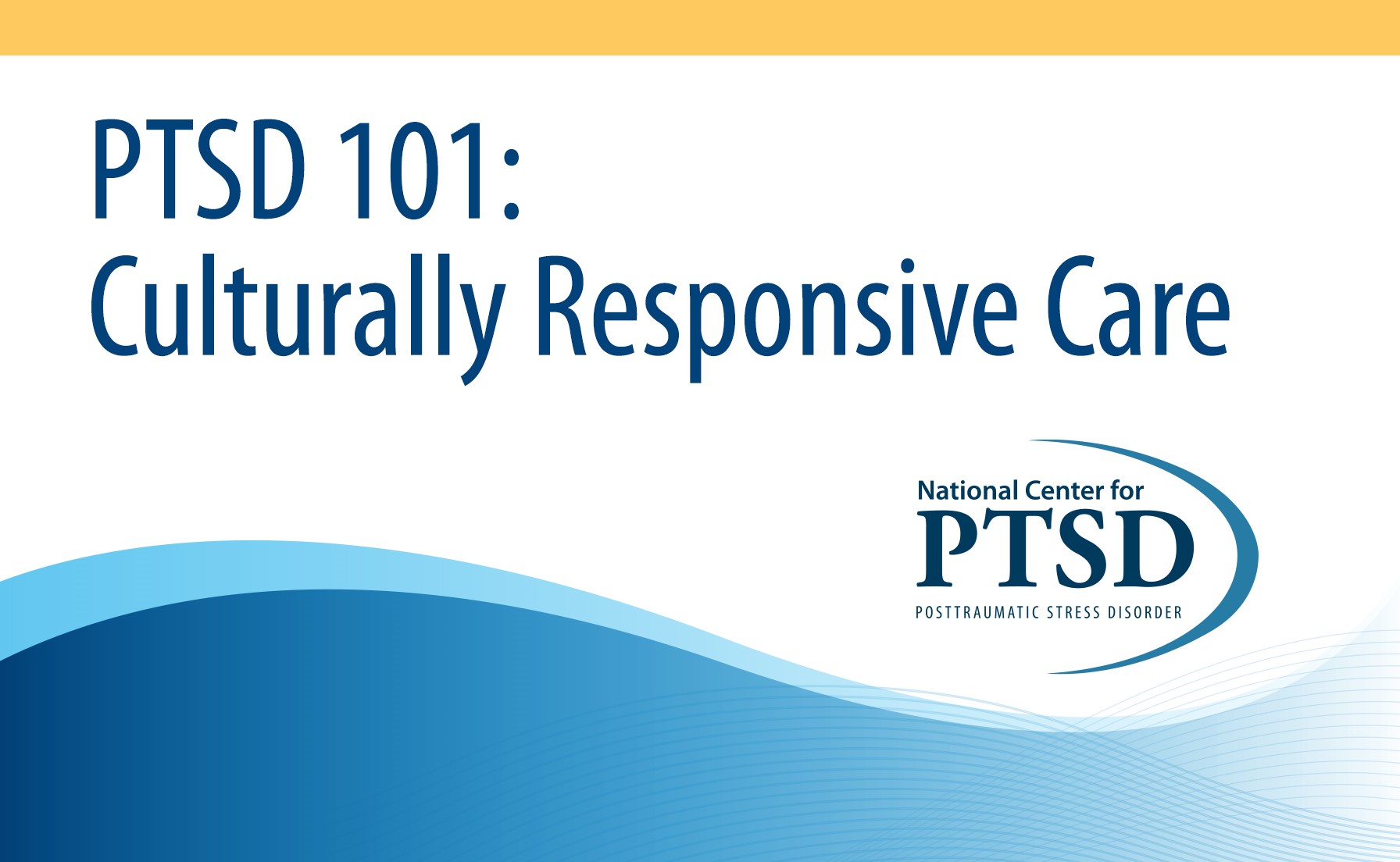Research on Women, Trauma, and PTSD
Research on Women, Trauma, and PTSD
This article reviews research on women's experiences of trauma and posttraumatic stress disorder (PTSD), with a focus on sex-based similarities and differences. The majority of this research focuses on DSM-IV measures with more recent research on DSM-5 measures incorporated as available.
History
Most early research on trauma and PTSD focused on samples of men (1). The majority of these studies examined factors related to how combat Veterans responded to war-related trauma. Around the same time, researchers who studied women's experiences of sexual violence identified a syndrome that was similar to that experienced by combat-exposed men (1). This recognition led to an increase in research on women's experiences of traumatic events and risk for PTSD (2,3). Since this time, a great deal has been learned about trauma and PTSD in women, including their risk for exposure and PTSD prevalence, factors that increase or decrease risk for PTSD, symptom expression and comorbid conditions, and to a lesser extent, how PTSD treatment outcomes differ for women and men (4-7).
Risk of Trauma Exposure
Research using the National Epidemiologic Survey on Alcohol and Related Conditions-III (NESARC-III) representative sample indicates that about 69% of the U.S. population and approximately half of all women in the U.S. will be exposed to at least one traumatic event in their lifetime (8,9). While women are somewhat less likely to experience certain traumatic events compared to men (e.g., accidental injury, war-related trauma, natural disaster, witnessing injury, etc.) (4,9,10), research findings indicate that women are more vulnerable to sexual assault and childhood sexual abuse than men (9-13). Results based on the CDC National Intimate Partner and Sexual Violence Survey conducted in 2016/17 indicate that nearly 1 in 4 women (26.8%) in the United States have experienced an attempted or completed rape at some time in their lives (11).
Outcomes of Trauma Exposure
Women's experiences of trauma have been linked to a variety of negative mental health consequences, especially PTSD (4,7,14,15). Estimates from community studies suggest that women experience PTSD at two times the rate that men do (12,16). U.S. prevalence estimates of lifetime PTSD from the NESARC-III representative sample are 8.0% for women and 4.1% for men (8). Sex difference in susceptibility to PTSD appear to be at least partially related to the fact that women are more likely to experience sexual assault, as this experience carries one of the highest risks for PTSD (6,7,11,17,18). However, this does not entirely account for differences in PTSD, as findings indicate that women are at greater risk for developing PTSD than men even when they are exposed to similar types of trauma (7,10). A number of explanations have been proposed to account for this effect (4,6,11,15,19). For example, it has also been suggested that women may be more susceptible to mental health consequences because they are more likely to experience trauma within established relationships and their traumatic exposures are more likely to be experienced over an extended period of time than men (e.g., ongoing interpersonal violence within a marriage). Another interesting hypothesis suggests that women's sex-specific social roles (e.g., wife, mother, or caretaker) may compound the negative impact of trauma exposure, as women could experience additional role strain when traumatic experiences or stress reactions interfere with their ability to fulfill these roles. (6,20)
All of these explanations posit potential moderators of the relationship between trauma exposure and posttraumatic sequelae, consistent with the perspective that sex differences in risk for PTSD may be larger or smaller depending on specific contextual factors (4). In this regard, it is interesting to note that studies have revealed few differences between women's and men's risk for PTSD following combat-related stress exposure (21-23), suggesting one context in which these differences are less likely.
Risk Factors for PTSD Following Trauma Exposure
Previous studies have identified a number of psychosocial factors that impact risk for PTSD following trauma exposure in both women and men (16,24-27), including most prominently:
- Pre-existing mental health problems (e.g., depression or anxiety disorder)
- Experiencing additional life stressors
- Availability of post-trauma social support
Though evidence remains limited regarding whether these and other risk factors are equally relevant for both women and men, a recent study that aimed to identify factors that might contribute to women's increased risk for PTSD among motor vehicle accident victims found that women's higher likelihood of experiencing acute stress disorder, neuroticism, lifetime sexual assault exposure, anxiety sensitivity, and pre-trauma anxiety symptoms helped explain their greater PTSD severity three months after the traumatic event (28). There is also some evidence that social support may be a more powerful resilience factor for women compared to men (29). Additional research is needed to better understand the extent to which these and other contextual factors have a differential impact on women's, as compared to men's risk for PTSD. Further research is also needed to better understand the role that biological factors, including XX chromosome, may play in increasing women's risk for PTSD (30).
Expression of PTSD and Comorbidity
Findings generally indicate that PTSD is experienced similarly for women and men. For example, one study (31) that examined reporting on a DSM-IV PTSD measure found that women and men OEF/OIF Veterans were about equally likely to report a variety of different symptoms of PTSD on a widely used self-report measure of PTSD, the PTSD Checklist (PCL). Another more recent study found that women and men with probable PTSD reported similarly on 18 out of 20 items in a DSM-5 measure of PTSD (32).
Although women and men may experience PTSD similarly, the broader literature indicates that women are more likely to report co-occurring internalizing disorders like anxiety and depression and men are more likely to report externalizing disorders like substance abuse (7,12,33,34). Thus, it is likely that these differences would also be observed among individuals with PTSD. Consistent with this perspective, there is some evidence that women with PTSD are more likely to have comorbid mood and anxiety disorders and less likely to have comorbid substance use disorders (SUDs) compared with men (20,35-38). Although findings indicate that PTSD is also associated with adverse changes in physical health status, to date evidence suggests that PTSD is likely to have similar effects on physical health for women and men (39), as documented in a study of military Veterans that found similar relationships between PTSD and physical symptoms for women and men (40).
Treatment Seeking and Treatment Effectiveness
There are a variety of effective treatments for PTSD, including both cognitive behavioral therapy and pharmacotherapy (41,42). Research indicates that women are somewhat more likely to seek PTSD treatment than men (9,43,443). This may be due at least in part to women reporting less internalized stigma related to mental health treatment-seeking than men (45). Although evaluating whether there are sex differences in the effectiveness of PTSD treatment can be a challenge due to women's and men's differential risk for different kinds of trauma, a recent meta-analysis on sex differences in trauma-focused psychological treatment outcomes (5) suggested that women may experience greater reductions in PTSD symptoms following treatment, at least in the short run and as evaluated by clinicians. Other research has revealed similar findings, demonstrating bigger declines in PTSD symptom severity for women in group-based trauma-focused psychotherapies (46).
Findings also suggest that there are few sex differences in use of pharmacological treatments for PTSD, with results from the NESARC-III suggesting that about one-third of both women and men have used these treatments (9). However, in contrast with findings of the effectiveness of psychological treatments, current evidence indicates that there are not significant sex differences in the effectiveness of selective serotonin reuptake inhibitors (SSRIs) and serotonin-norepinephrine reuptake inhibitors (SNRIs) for treating PTSD (47), suggesting they are equally as effective for women as they are for men (4).
PTSD and Broader Well-Being
Knowledge regarding sex differences in the impact of PTSD and PTSD treatment on women's and men's broader well-being is relatively limited to date. Within military and Veteran populations, there is some evidence that the impact of PTSD on quality of life may be more similar than different (20,48,49), although one study found differential effects of PTSD on occupational outcomes (50). With regard to treatment effects on quality of life, another study found that women experienced greater improvements on a number of secondary well-being outcomes (e.g., social support, coping strategies, and quality of life) as compared to men among those who received cognitive-behavioral therapy for PTSD (51). Yet, more research is needed to confirm these findings.
Summary and Future Directions
As this review of the literature reveals, we now know a great deal about women's experiences of trauma and PTSD. In general, research indicates that women experience fewer traumatic events compared with men, though the kinds of traumatic events they experience are typically associated with higher risk for PTSD. While women are more likely than men to develop PTSD, research generally suggests more similarities than differences in the way that women and men experience PTSD. Finally, there is some research suggesting that women may experience great improvements in PTSD following treatment and that PTSD treatment may also produce greater benefits for women's broader quality of life.
References
- Kimerling, R., Ouimette, P., & Wolfe, J. (Eds.) (2002). Gender and PTSD. The Guilford Press.
- Foa, E. B., Hearst-Ikeda, D., & Perry, K. J. (1995). Evaluation of a brief cognitive-behavioral program for the prevention of chronic PTSD in recent assault victims. Journal of Consulting and Clinical Psychology, 63(6), 948-955. https://doi.org/10.1037/0022-006X.63.6.948
- Resick, P. A. (1994). Cognitive processing therapy for rape-related PTSD and depression. The National Center for PTSD Clinical Quarterly, 4(3-4), 1-5.
- Kimerling, R., Weitlauf, J. C., & Street, A. E. (2021). Gender issues in PTSD. In M. J. Friedman, P. P. Schnurr, & T. M. Keane (Eds.), Handbook of PTSD: Science and Practice (3rd Ed., pp. 229-245). The Guilford Press.
- Wade, D., Varker, T., Kartal, D., Hetrick, S., O'Donnell, M., & Forbes, D. (2016). Gender difference in outcomes following trauma-focused interventions for posttraumatic stress disorder: Systematic review and meta-analysis. Psychological Trauma: Theory, Research, Practice, and Policy, 8(3), 356-364. https://doi.org/10.1037/tra0000110
- Street, A. E., & Dardis, C. M. (2018). Using a social construction of gender lens to understand gender differences in posttraumatic stress disorder. Clinical Psychology Review, 66, 97-105. https://doi.org/10.1016/j.cpr.2018.03.001
- Tolin, D. F., & Foa, E. B. (2006). Sex differences in trauma and posttraumatic stress disorder: A quantitative review of 25 years of research. Psychological Bulletin, 132(6), 959-992. https://doi.org/10.1037/0033-2909.132.6.959
- Goldstein, R. B., Smith, S. M., Chou, S. P., Saha, T. D., Jung, J., Zhang, H., Pickering, R. P., Ruan, W. J., Huang, B., & Grant, B. F. (2016). The epidemiology of DSM-5 posttraumatic stress disorder in the United States: results from the National Epidemiologic Survey on Alcohol and Related Conditions-III. Social Psychiatry and Psychiatric Epidemiology, 51, 1137-1148. https://doi.org/10.1007/s00127-016-1208-5
- Lehavot, K., Katon, J. G., Chen, J. A., Fortney, J. C., & Simpson, T. L. (2018). Post-traumatic stress disorder by gender and veteran status. American Journal of Preventive Medicine, 54(1), e1-e9. https://doi.org/10.1016/j.amepre.2017.09.008
- Blanco, C., Hoertel, N., Wall, M. M., Franco, S., Peyre, H., Neria, Y., Helpman, L., & Limosin, F. (2018). Toward understanding sex differences in the prevalence of posttraumatic stress disorder: Results from the national epidemiologic survey on alcohol and related conditions. Journal of Clinical Psychiatry, 79(2), 19420. https://doi.org/10.4088/JCP.1m11364
- Basile, K.C., Smith, S.G., Kresnow, M., Khatiwada S., & Leemis, R.W. (2022). The National Intimate Partner and Sexual Violence Survey: 2016/2017 Report on Sexual Violence. Atlanta, GA: National Center for Injury Prevention and Control, Centers for Disease Control and Prevention.
- Korte K. J., Jiang T., Koenen K. C., Galea, S., & Gradus, J. L. (2021). Epidemiology of trauma and PTSD in adults. In M. J. Friedman, P. P. Schnurr, & T. M. Keane (Eds.), Handbook of PTSD: Science and practice. Third Ed. (pp. 61-75). The Guilford Press.
- Benjet, C., Bromet, E., Karam, E. G., Kessler, R. C., McLaughlin, K. A., Ruscio, A. M., Shahly, V., Stein, D. J., Petukhova, M., & Hill, E. (2016). The epidemiology of traumatic event exposure worldwide: Results from the World Mental Health Survey Consortium. Psychological Medicine, 46(2), 327-343. https://doi.org/10.1017/S0033291715001981
- Christiansen, D. M., & Hansen, M. (2015). Accounting for sex differences in PTSD: A multi-variable mediation model. European Journal of Psychotraumatology, 6(1), 26068. https://doi.org/10.3402/ejpt.v6.26068
- Overstreet, C., Berenz, E. C., Kendler, K. S., Dick, D. M., & Amstadter, A. B. (2017). Predictors and mental health outcomes of potentially traumatic event exposure. Psychiatry Research, 247, 296-304. https://doi.org/10.1016/j.psychres.2016.10.047
- Perrin, M., Vandeleur, C. L., Castelao, E., Rothen, S., Glaus, J., Vollenweider, P., & Preisig, M. (2014). Determinants of the development of post-traumatic stress disorder, in the general population. Social Psychiatry and Psychiatric Epidemiology, 49, 447-457. https://doi.org/10.1007/s00127-013-0762-3
- Guina, J., Nahhas, R. W., Kawalec, K., & Farnsworth, S. (2019). Are gender differences in DSM-5 PTSD symptomatology explained by sexual trauma? Journal of Interpersonal Violence, 34(21-22), 4713-4740. https://doi.org/10.1177/088626051667729
- Santiago, P. N., Ursano, R. J., Gray, C. L., Pynoos, R. S., Spiegel, D., Lewis-Fernandez, R., Friedman, M. J., & Fullerton, C. S. (2013). A systematic review of PTSD prevalence and trajectories in DSM-5 defined trauma exposed populations: Intentional and non-intentional traumatic events. PLoS One, 8(4), e59236. https://doi.org/10.1371/journal.pone.0059236
- Olff, M., Langeland, W., Draijer, N., & Gersons, B. P. R. (2007). Gender differences in posttraumatic stress disorder. Psychological Bulletin, 133(2), 183-204. https://doi.org/10.1037/0033-2909.133.2.183
- Zelkowitz, R. L., Archibald, E. A., Gradus, J. L., & Street, A. E. (2023). Postdeployment mental health concerns and family functioning in Veteran men and women. Psychological Trauma: Theory, Research, Practice, and Policy, 15(4), 705-714. https://doi.org/10.1037/tra0001237
- Vogt, D., Vaughn, R., Glickman, M. E., Schultz, M., Drainoni, M., Elwy, R., & Eisen, S. (2011). Gender differences in combat-related stressors and their association with postdeployment mental health in a nationally representative sample of U. S. OEF/OIF Veterans. Journal of Abnormal Psychology, 120(4), 797-806. https://doi.org/10.1037/a0023452.supp
- Street, A. E., Gradus, J. L., Giasson, H. L., Vogt, D., & Resick, P. (2013). Gender differences among Veterans deployed in support of the wars in Afghanistan and Iraq. Journal of General Internal Medicine, 28 (Suppl 2), S556-562. https://doi.org/10.1007/s11606-013-2333-4
- Frank, C., Zamorski, M. A., Lee, J. E., & Colman, I. (2018). Deployment-related trauma and post-traumatic stress disorder: does gender matter? European Journal of Psychotraumatology, 9(1), 1486123. https://doi.org/10.1080/20008198.2018.1486123
- Brewin, C. R., Andrews, B., & Valentine, J. D. (2000). Meta-analysis of risk factors for posttraumatic stress disorder in trauma-exposed adults. Journal of Consulting and Clinical Psychology, 68(5), 748-766. https://doi.org/10.1037/0022-006X.68.5.748
- Ozer, E., Best, S., Lipsey T., & Weiss, D. (2003). Predictors of posttraumatic stress disorder and symptoms in adults: A meta-analysis. Psychological Bulletin, 129(1), 52-73. https://doi.org/10.1037/1942-9681.S.1.3
- DiGangi, J. A., Gomez, D., Mendoza, L., Jason, L. A., Keys, C. B., & Koenen, K. C. (2013). Pretrauma risk factors for posttraumatic stress disorder: A systematic review of the literature. Clinical Psychology Review, 33(6), 728-744. https://doi.org/10.1016/j.cpr.2013.05.002
- Sareen, J. (2014). Posttraumatic stress disorder in adults: Impact, comorbidity, risk factors, and treatment. The Canadian Journal of Psychiatry, 59(9), 460-467. https://doi.org/10.1177/0706743714059- 00902
- Haering, S., Seligowski, A. V., Linnstaedt, S. D., Michopoulos, V., House, S. L., Beaudoin, F. L., An, X., ... & Stevens, J. S. (2024). Disentangling sex differences in PTSD risk factors. Nature Mental Health, 2, 1-11. https://doi.org/10.1038/s44220-024-00236-y
- Taylor, S. E. (2011). Social support: A review. In H.S. Friedman (Ed.), The Oxford handbook of health psychology (1st Ed., pp. 189-214). Oxford University Press.
- Pineles, S. L., Hall, K. A. A., & Rasmusson, A. M. (2017). Gender and PTSD: Different pathways to a similar phenotype. Current Opinion in Psychology, 14, 44-48. https://doi.org/10.1016/j.copsyc.2016.11.002
- King, M. W., Street, A. E., Gradus, J. L., Vogt, D. S., & Resick, P. A. (2013). Gender differences in posttraumatic stress symptoms among OEF/OIF Veterans: An item response theory analysis. Journal of Traumatic Stress, 26(2), 175-183. https://doi.org/10.1002/jts.21802
- Murphy, S., Elklit, A., Chen, Y. Y., Ghazali, S. R., & Shevlin, M. (2019). Sex differences in PTSD symptoms: A differential item functioning approach. Psychological Trauma: Theory, Research, Practice, and Policy, 11(3), 319-327. https://doi.org/10.1037/tra0000355
- Kessler, R. C., Berglund, P., Demler, O., Jim, R., Merikangas, K. R., & Walters, E. E. (2005). Lifetime prevalence and age-of-onset distributions of DSM-IV disorders in the National Comorbidity Survey Replication. Archives of General Psychiatry, 62(6), 593-602. https://doi.org/10.1001/archpsyc.62.6.593
- Kachadourian, L. K., Pilver, C. E., & Potenza, M. N. (2014). Trauma, PTSD, and binge and hazardous drinking among women and men: Findings from a national study. Journal of Psychiatric Research, 55, 35-43. https://doi.org/10.1016/j.jpsychires.2014.04.018
- Orsillo, S. M., Raja, S., & Hammond, C. (2002). Gender issues in PTSD with comorbid mental health disorders. In R. Kimerling, P. Ouimette & J. Wolfe (Eds.), Gender and PTSD (pp. 207-231). The Guilford Press.
- Blanco, C., Xu, Y., Brady, K., Pérez-Fuentes, G., Okuda, M., & Wang, S. (2013). Comorbidity of posttraumatic stress disorder with alcohol dependence among US adults: Results from National Epidemiological Survey on Alcohol and Related Conditions. Drug and Alcohol Dependence, 132(3), 630-638. https://doi.org/10.1016/j.drugalcdep.2013.04.016
- Torchalla, I., & Nosen, E. (2019). Sex and gender differences in PTSD and substance use disorder comorbidity. In A. A. Vujanovic & S. E. Back (Eds.), Posttraumatic stress and substance use disorders (1st Ed., pp. 51-71). Routledge.
- Horesh, D., Lowe, S. R., Galea, S., Uddin, M., & Koenen, K. C. (2015). Gender differences in the longâ€term associations between posttraumatic stress disorder and depression symptoms: Findings from the Detroit Neighborhood Health Study. Depression and Anxiety, 32(1), 38-48. https://doi.org/10.1002/da.22267
- Pacella, M. L., Hruska, B., & Delahanty, D. L. (2013). The physical health consequences of PTSD and PTSD symptoms: A meta-analytic review. Journal of Anxiety Disorders, 27(1), 33-46. https://doi.org/10.1016/j.janxdis.2012.08.004
- Schuster, J., Shipherd, J. C., Suvak, M., Vogt, D., King, L. A., & King, D. W. (2013). Posttraumatic stress symptomatology as a mediator of the relationship between warzone exposure and physical health symptoms in men and women. Journal of Traumatic Stress, 26(3), 319-328. https://doi.org/10.1002/jts.21818
- Forbes, D., Bisson, J. I., Monson, C. M., & Berliner, L. (Eds.). (2020). Effective treatments for PTSD. Third Edition Practice guidelines from the International Society for Traumatic Stress Studies. Guilford Publications.
- Weber, M., Schumacher, S., Hannig, W., Barth, J., Lotzin, A., Schäfer, I., Ehring, T., & Kleim, B. (2021). Long-term outcomes of psychological treatment for posttraumatic stress disorder: A systematic review and meta-analysis. Psychological Medicine, 51(9), 1420-1430. https://doi.org/10.1017/S003329172100163X
- Roberts, A. L., Gilman, S. E., Breslau, J., Breslau, N., & Koenen, K. C. (2011). Race/ethnic differences in exposure to traumatic events, development of post-traumatic stress disorder, and treatment-seeking for post-traumatic stress disorder in the United States. Psychological Medicine, 41(1), 71-83. https://doi.org/10.1017/S0033291710000401
- Valenstein-Mah, H., Kehle-Forbes, S., Nelson, D., Danan, E. R., Vogt, D., & Spoont, M. (2019). Gender differences in rates and predictors of individual psychotherapy initiation and completion among Veterans Health Administration users recently diagnosed with PTSD. Psychological Trauma: Theory, Research, Practice, and Policy, 11(8), 811-819. https://doi.org/10.1037/tra0000428
- Fox, A. B., Meyer, E. C., & Vogt, D. (2015). Attitudes about the VA health-care setting, mental illness, and mental health treatment and their relationship with VA mental health service use among female and male OEF/OIF Veterans. Psychological Services, 12(1), 49-58. https://doi.org/10.1037/a0038269
- Schwartze, D., Barkowski, S., Strauss, B., Knaevelsrud, C., & Rosendahl, J. (2019). Efficacy of group psychotherapy for posttraumatic stress disorder: Systematic review and meta-analysis of randomized controlled trials. Psychotherapy Research, 29(4), 415-431. https://doi.org/10.1080/10503307.2017.1405168
- Forman-Hoffman, V., Middleton, J. C., Feltner, C., Gaynes, B. N., Weber, R. P., Bann, C., Viswanathan, M., Lohr, K. N., Baker, C., & Green, J. (2018). Psychological and pharmacological treatments for adults with posttraumatic stress disorder: A systematic review update. Agency for Healthcare Research and Quality (US).
- Creech, S. K., Benzer, J. K., Meyer, E. C., DeBeer, B. B., Kimbrel, N. A., & Morissette, S. B. (2019). Longitudinal associations in the direction and prediction of PTSD symptoms and romantic relationship impairment over one year in post 9/11 Veterans: A comparison of theories and exploration of potential gender differences. Journal of Abnormal Psychology, 128(3), 245-255. https://doi.org/10.1037/abn0000420
- Fang, S. C., Schnurr, P. P., Kulish, A. L., Holowka, D. W., Marx, B. P., Keane, T. M., & Rosen, R. (2015). Psychosocial functioning and health-related quality of life associated with posttraumatic stress disorder in male and female Iraq and Afghanistan war Veterans: The VALOR registry. Journal of Women's Health, 24(12), 1038-1046. https://doi.org/10.1089/jwh.2014.5096
- Vogt, D., Smith, B. N., Fox, A. B., Amoroso, T., Taverna, E., & Schnurr, P. P. (2017). Consequences of PTSD for the work and family quality of life of female and male US Afghanistan and Iraq War Veterans. Social Psychiatry and Psychiatric Epidemiology, 52, 341-352. https://doi.org/10.1007/s00127-016-1321-5
- Békés, V., Beaulieu-Prévost, D., Guay, S., Belleville, G., & Marchand, A. (2016). Women with PTSD benefit more from psychotherapy than men. Psychological Trauma: Theory, Research, Practice, and Policy, 8(6), 720-727. https://doi.org/10.1037/tra0000122
You May Also Be Interested In

PTSD 101: Culturally Responsive Care
Understand and develop the components of a culturally responsive case formulation.

PTSD 101: Prescribing for Older Veterans with PTSD
Learn best practices for pharmacological treatment for older Veterans with PTSD.
























